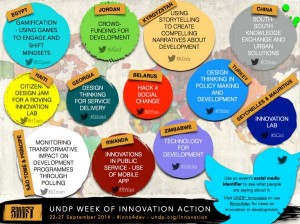Everyone pictures virtual volunteering as remote volunteers that sit in front of a computer or tablet or smart phone, typing and clicking, interacting only online and undertaking mostly techie tasks. But something I learned early on when I started researching virtual volunteering back in 1996 is that it’s actually a very human thing, that often leads to very personal non-computer-related activities and connections.
 More than 20 years ago, some members of an online discussion group, Postcard2 or P2, an email-based gathering place for people to talk about a particular type of music – alternative country – decided to create their own nonprofit and host a weekend of concerts in St. Louis to feature bands performing the kind of music they love, which is rarely played on the radio. It became an annual event, called Twangfest. And in June 2016, Twangfest will host its 20th event milestone.
More than 20 years ago, some members of an online discussion group, Postcard2 or P2, an email-based gathering place for people to talk about a particular type of music – alternative country – decided to create their own nonprofit and host a weekend of concerts in St. Louis to feature bands performing the kind of music they love, which is rarely played on the radio. It became an annual event, called Twangfest. And in June 2016, Twangfest will host its 20th event milestone.
These founding members of this music festival were dispersed across the USA, and most saw each other face-to-face only once or twice a year. But they spent time together, online, every week, often every day, for a few years. They had become close friends who shared a passion, and they channeled that passion into an onsite event that’s one of my favorite examples of what virtual volunteering can lead to.
I was a part of the discussion group starting in 1996, just as a lurker, and sometimes, more than 100 messages would be posted in a single day. I wrote about Twangfest, and the community that spawned it, back in 2000 for the Virtual Volunteering Project. I got to go to the event in 1998 and 1999, and I still meet with people I met via P2 – many are still dear friends. Here’s part of the description of the discussion group from some point in its history:
This list began as an offshoot of Postcard, the Uncle Tupelo list, and was created for people who wanted to discuss a wider range of music, including (but not limited to) alt.country, country rock, hard country, bluegrass, honky-tonk, insurgent country, roots rock, and hillbilly music We also discuss a wider range of topics, including the music’s forerunners and historical background, the sociology of the music and its listeners, and contemporary business practices that make the music possible. Many of the 600+ subscribers to this list are ordinary folks who love this music. The list also includes musicians, writers, radio and record label folks, and others who work in the music business, who bring an interesting perspective to the subjects… Years of argument and agreement have created a sense of community on P2. List members meet up at musical or other venues in their home towns or as they travel.
Note that it never says anything about virtual volunteering. The intention of this group was never to create a music festival and a nonprofit, and even with those creations, no member of the group was calling it virtual volunteering. Yet, that’s what it was. Some volunteers took leadership roles, becoming members of the board of directors, identifying places to advertise, recruiting volunteer designers, negotiating with venues, and approaching potential sponsors. Some volunteers took on micro tasks – like me: I was an on-call volunteer, ready to answer questions as needed about preparing nonprofit paperwork and coming up with phrasing for the web site and press releases to make sure people knew this wasn’t just a music festival, that it was a nonprofit organization working to preserve and promote the unique tradition and culture of Americana music. The nonprofit never divided people as online volunteers and traditional volunteers – all were just volunteers (and in this case, just means solely, not merely, so please, no hate mail).
I’m stunned that it’s been 20 years since Twangfest started! But, then again, virtual volunteering is a practice that’s more than 35 years old!
Also see:
Lessons on effective, valuable online communities – from the 1990s
Updated: research regarding virtual volunteering
 The Last Virtual Volunteering Guidebook, a book decades in the making, by Susan J. Ellis and myself. Tools come and go, terms come and go, but certain community engagement principles never change, and our book can be used with the very latest digital engagement initiatives and “hot” new technologies meant to help people volunteer, advocate for causes they care about, connect with communities and make a difference. It’s available both in traditional print form and in digital version.
The Last Virtual Volunteering Guidebook, a book decades in the making, by Susan J. Ellis and myself. Tools come and go, terms come and go, but certain community engagement principles never change, and our book can be used with the very latest digital engagement initiatives and “hot” new technologies meant to help people volunteer, advocate for causes they care about, connect with communities and make a difference. It’s available both in traditional print form and in digital version.








